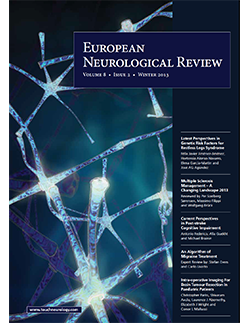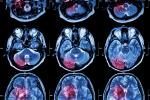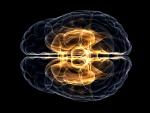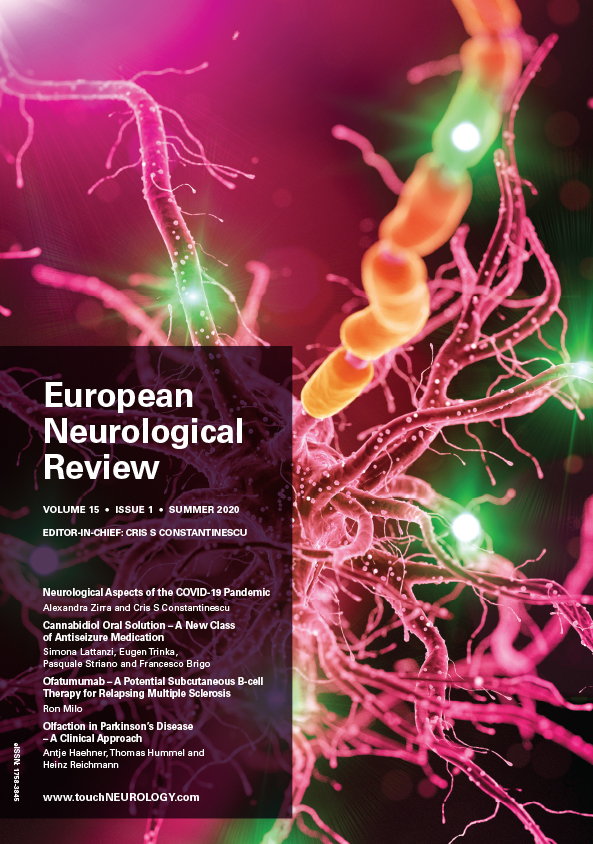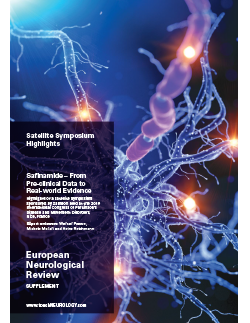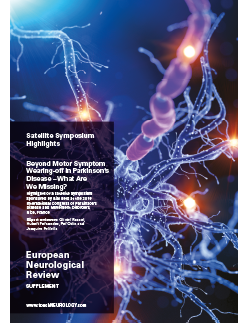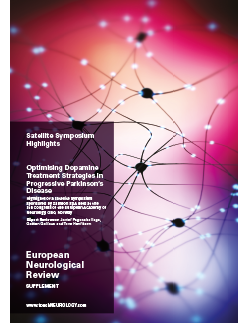EUROPEAN NEUROLOGICAL REVIEW – VOLUME 8 ISSUE 2 – WINTER 2013
Welcome to the winter edition of European Neurological Review. This edition features timely and concise review articles, written by esteemed experts, examining a wide range of important topics. Multiple sclerosis (MS) provides a significant focus, as do movement disorders, specifically Parkinson’s disease and restless legs syndrome, all three of which are commonly seen and managed in neurology clinics throughout Europe. This edition also includes articles on stroke, headache, imaging and intra-operative imaging, surgery for intracranial atherosclerotic steno-occlusive disease and pseudobulbar affect, all providing a worthy focus for our attention. Please peruse and enjoy the expert content and we welcome your feedback.
Welcome to the latest edition of European Neurological Review. As usual, this edition covers a wide range of the neurological disorders that we, neurologists in Europe, see in our clinics, on a daily basis, and study in our research labs, throughout our careers. The specific topics for this edition include the so-called pseudobulbar affect, which […]
Pseudobulbar Affect
Pseudobulbar affect (PBA), appearing as abrupt episodes of uncontrollable laughter or crying that are incongruent or independent of mood, occurs in many neurological brain diseases or following brain injury. PBA was first described by Lépine in the late-nineteenth century as lower cranial nerve palsy, but was later recognised as a frequent manifestation of acquired brain […]
Parkinson’s Disease
This article reviews the potential role of delayed gastric emptying in patients with Parkinson’s disease (PD) and morning akinesia. This can result in impaired motor function and impairment of a range of nonmotor functions, as shown in a recently reported early morning OFF study.1 Morning akinesia can have a significant impact on quality of life […]
Parkinson disease (PD) is a devastating neurodegenerative disorder Characterized by its cardinal motor symptoms: resting tremor, muscular rigidity, bradykinesia, postural instability, and gait abnormality.1 PD currently affects 1–2 % of individuals over age 65, totaling five million people worldwide. During the next 20 years, the incidence of PD is projected to double, making research on […]
Restless Legs Syndrome
Restless legs syndrome (RLS), first described by Willis in 1672 and in more detail by Ekbom in 1945 (hence ‘Willis-Ekbom’ disease), is a sensorimotor disorder with the primary sensory symptom consisting of a strong, often irresistible, urge to move the legs (and sometimes the arms as well), accompanied or caused by unpleasant sensations, that is […]
Restless legs syndrome (RLS) is a sensorimotor condition that primarily results in sleep disruption and subsequent daytime functional symptoms, particularly for those individuals with moderate-to-severe cases. In recent years there has been a shift from using the name ‘Restless Legs Syndrome’ to using ‘Willis–Ekbom Disorder’ (WED), in order to address matters of stigma and title […]
Multiple Sclerosis
Proceedings of the Meeting: Multiple Sclerosis Management – A Changing Landscape 2013, held on 26–27 April 2013 in Vienna, Austria Multiple Sclerosis Management 2013 The keynote lecture was given by Fred D Lublin (New York, New York, US), who outlined present and future challenges in the treatment of multiple sclerosis (MS). His theme was: where […]
Pathogenesis and Management of Multiple Sclerosis – An Update for the Multiple Sclerosis Nurse Bernd Kieseier, Dusseldorf, Germany The Pathogenesis of Multiple Sclerosis Since the clinical presentation of multiple sclerosis (MS) with the typical plaques in the brain was first correlated in 1868,1 much has been learned about this immune-mediated disease, which is characterised by […]
Although disease modifying treatments (DMT) have been available for multiple sclerosis (MS) for many years, there is a continuous need to manage the variety of symptoms reported by the patients and to lessen the accumulation of impairments and disability that accompany disease progression. Symptomatic treatment, an important arm in the whole management of MS, is […]
Multiple sclerosis (MS) is an inflammatory demyelinating disease of the central nervous system, and is the leading cause of nontraumatic disability in young adults. Prevalence varies between 50 to 200 per 100,000 people.1–3 Despite recent therapeutic advances that have led to improvements in disease control in relapsing-remitting MS, the majority of individuals with MS experience […]
Stroke
This article summarises the content of a symposium that took place during the 21st World Congress of Neurology in Vienna, Austria. It aims to describe the vascular and cellular processes that are involved in the maintenance of the blood–brain barrier (BBB), the cells involved in the neurovascular unit (NVU) and its dysfunction in stroke resulting […]
Stroke is a sudden loss of cerebral blood flow caused either by occlusion (85 % of cases) or rupture of the cerebral artery manifesting with focal neurological deficits.1 One-third of stroke patients are younger than and two-thirds are older than 65 years of age.2 Stroke can have both immediate and ongoing physical consequences. Disability and […]
Lacunar ischaemic infarctions, white matter lesions (WML) (hyperintensities) or leukoaraiosis and cerebral microbleeds constitute the spectrum of ischaemic cerebral small-vessel disease (SVD) documented on magnetic resonance imaging (MRI) studies. History of ischaemic SVD is frequently present in patients with cognitive impairment of vascular origin.1–4 Cerebral lacunes are small infarctions of less than 20 mm in […]
Headache
Proceedings of a Symposium Presented at the XXI World Congress of Neurology in Vienna, Austria, 24 September 2013 Expert Review by: Stefan Evers1 and Carlo Lisotto2 1. Professor of Neurology, University of Münster and Director, Department of Neurology, Krankenhaus Lindenbrunn, Germany; 2. Neurologist, Headache Centre, Department of Neurosciences, University of Padua, Italy Migraine is a […]
L’emicrania è una cefalea primaria frequente e disabilitante. Nello studio dell’OMS del 2010 sul Peso Globale di Malattia l’emicrania è stata classificata al terzo posto tra i disturbi a maggiore prevalenza e al settimo posto tra le cause specifiche di disabilità a livello mondiale.1,2 Nel 1991 il primo triptano è stato immesso sul mercato europeo […]
Imaging
Stroke is the leading cause of adult disability and the second leading cause of death in developed countries.1 Despite progress in stroke treatment, 20–30 % of strokes result in death within one month and 70–80 % result in significant long-term disability.2–4 Improved preventative and acute management of cerebrovascular disease has reduced stroke-related mortality;5 however, many […]
Intra-operative Imaging
A number of paediatric and adult neurosurgical units are investing significant resources in the development of intra-operative magnetic resonance imaging (ioMRI). In Alder Hey Hospital we have been fortunate enough to have this service available since October 2009 and so we have accumulated significant experience in this field. In our institution it is used routinely […]
Modern anaesthetic practice requires the anaesthesiologist to care for extremely sick patients while negotiating the intricacies of myriad procedural environments. One such unique environment that is becoming increasingly important for contemporary anaesthesiologists to be familiar with is that of the intra-operative magnetic resonance imaging (ioMRI) suite.1,2 ioMRI is an evolving technology that offers precise intra-cranial […]
Surgery
Surgery for Occlusive Atherosclerotic DiseaseExtracranial-intracranial (EC-IC) bypass for revascularisation in the setting of atherosclerotic occlusive disease has remained a topic of intense interest and scrutiny over the last four decades. The underlying premise of EC-IC bypass in this setting is to provide blood flow augmentation in the setting of cerebral ischaemia, aiming to improve blood […]
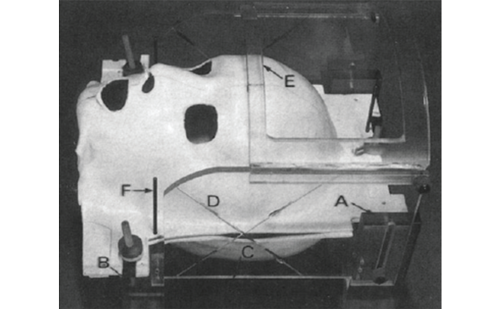
Trending Topic
Intracranial radiosurgery, no matter the means or methods of administration, is predicated on a core set of principles, including head immobilization and precise delineation of the treatment target. For some five decades after Leksell introduced the concept of stereotactic radiosurgery in 1951,1 rigid head fixation via an invasive device was an integral component towards these ends. […]
Journal Archive
European Neurological Review is a peer-reviewed, free-to-access, bi-annual neurology journal comprising review articles, case reports, practice guides, theoretical discussions, and original research. It features balanced and comprehensive articles written by leading authorities, addressing the most important and salient developments in the field of neurology in practical terms.
Latest articles videos and clinical updates - straight to your inbox
Log into your Touch Account
Earn and track your CME credits on the go, save articles for later, and follow the latest congress coverage.
Register now for FREE Access
Register for free to hear about the latest expert-led education, peer-reviewed articles, conference highlights, and innovative CME activities.
Sign up with an Email
Or use a Social Account.
This Functionality is for
Members Only
Explore the latest in medical education and stay current in your field. Create a free account to track your learning.


